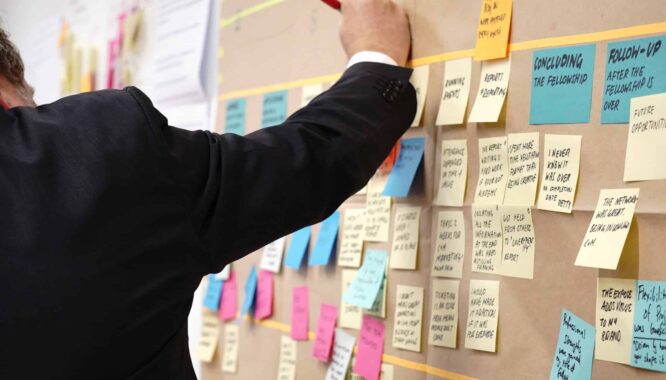
Ever since the global pandemic, there has been a revolution in the digital workplace. With supply-chain issues, procurement problems, differing expectations of employee experiences and more, digital workplaces have evolved and transformed the work environment with different type of business-processes in this data-center environment.
Large companies and start-ups alike need to be agile, adaptable, and innovative to power the future of work. The digital shift isn’t just about the migration of services to the cloud, but a complete restructuring of the internal organization. This restructuring allows businesses to improve efficiency, remove redundancy, improve workplace safety and much more. Services ranging from an HRIS, to HR platform-as-a-service like what is offered by PeopleSpheres, to supply chain management software. 2022 will bring about numerous new digital workplace trends and here are our top 5.
Related articles:
Digital Leadership in HR: Transform your Management System
Digital Assistant: A Powerful Tool in the Workplace
1. Digital Workplace Technology
Chatbots and Artificial Intelligence
Starting off with rule-based HR chatbots and artificial intelligence. Chatbots are one of many points of interaction for consumers. With instant communication, ease of access and employee engagement, these tools empower SMBs and start-ups to grow their business without having to stress of the possibility to digitize your operations.
From being the first interaction an employee has with an organization, to being able to set up meetings with individuals, enterprise AI solutions such as chatbots paired with the emerging AI-based chatbots like Vondy that rely on machine learning are very useful AI tools that can put a new meaning on being organized. Paired with the emerging AI-based chatbots that rely on machine learning, natural language processing and other complex and new technologies, these chatbots have a much wider capability to transform digital operations.
There are many reasons this digitalization can positively disrupt your current, tedious workflow. With various benefits ranging from enhanced lead generation, 24/7 support, availability, consistent customer satisfaction, reduced customer service costs, and the ability to improve over time. Chatbot automation can drastically improve the digital experience for both customers and employees through these transformation initiatives. We can’t just think this is “digital first”, but “people first”. This is true as through this digital era opportunities, we can increase customer and employee satisfaction.
Increased Technology Adoption
Moving onto the next digital workplace trend for 2022, increased technology adoption. As companies evolve and attempt to compete in the modern workplace, checking things like Nextiva reviews before technological adoption of breakthrough digital technologies will be on the forefront to create a competitive edge, including digital supply chain solutions that streamline operations and boost efficiency. Whether it be internally focused tools like HR reporting or onboarding/offboarding procedures to externally focused tools, these trends in technology will continue to advance and help accelerate the next wave of businesses.
HR Software Integrations
For the last digital workplace trend in relation to technology in the workplace, there are HR software integrations. Since the global pandemic, the role of HR has expanded to accommodate worker well-being, employee engagement, remote and hybrid workflows, gig-working and countless other developments. Additionally, with the new ways to interact with employees, HR software like PeopleSphere’s all-encompassing HR platform allows companies to connect existing software and manage everything in a single access point, regardless of device.
2. Focusing on the Employee Experience
Virtual On-Demand Workforce
With ever-changing circumstances, remote work has become a requirement for all companies regardless of size. From hiring freelancers to full-time employees virtually, this new on-demand workforce is the norm. As the digital workplace trends to a hybrid model with parallel workforces (remote and in-person), the employee experience must also transform to meet expectations. This new digital workforce should allow employees enough flexibility, training, and opportunity to ensure a successful transition. In the hybrid model, it is imperative to have an all-encompassing HR solution that composes all areas of the employee-employer relationship.
Moreover, with a virtual workforce, a centralized platform that displays all relevant information can drastically improve productivity, reduce fatigue, aid with usability and much more. Similar to other solutions, the more consolidated a solution can be, the more efficient and effective the workforce can be. This is specially important as digital-technology is evolving rapidly and to be able to be one of the many business leaders, you have to have the agility to adapt to newer technology.
End-to-end HR Software
Another digital workplace trend that is expected is the utilization of end-to-end HR software. Before the pandemic, many companies had fragmented systems that were complex, fatiguing, and unnecessary. This ranged from different portals for different issues or repetitive data entry, regardless, the future workplace will use an all-encompassing HR solution. This practice can immensely improve the employee experience and can be a strong differentiating factor that will help with employee retention.
This solution will help mergers & acquisition, expanding internationally, and with legacy modernization. This is because the software is cloud-based. This makes every task scalable as you have control to share everything instantly with your team. PeopleSpheres is a clear example at this, giving you an IT strategy in this digital world.
3. Data Sharing and Data Privacy
With a global focus on privacy and data concerns, this digital workplace trend extends far from just work. Most large companies are analyzing, collecting, and distributing vast amounts of consumer data in return for a buck, however, the real treasure is data optimization. More importantly, for small businesses and startups, this area is a way to digitally transform your systems and incorporate it to become a major player in your space.
Before going on to create new tech stacks to enhance your current systems, it is important to acknowledge and evaluate the current state of employee data. How it’s being collected, stored, analyzed and shared is vital to maintaining a positive employee experience. Any form of business that uses/stores digital data like IP Addresses, bank account information, or anything else confidential, must constantly be on the lookout for emerging technologies to protect and secure this data.
Customers and employees alike look at internal data privacy policies as a differentiation factor, not just some lousy policy to meet standards. With billion-dollar cases for anti-trust and data violation, the knowledge of data breaches and privacy are rapidly growing.
Focusing internally, businesses house employee data all the time. Addresses, social security numbers, and bank information to name just a few. This information, if compromised can create a hostile environment and become an HR nightmare. Thus, it is also important to have an internally focused data-encryption solution that secures employee data.
4. BYOD: The Use of Personal Devices
One of the major battles for HR is managing employee well-being as they merge work and personal life. Since the pandemic, the lines between work and home have shifted to bedroom and living room. This transition relays over to the use of personal devices. As many companies have seen this as an opportunity to cut costs, they didn’t realize the difficulty to manage employee expectations between work and fun.
This digital workplace trend of Bring Your own Device (BYOD) means there’ll be an expansion of technologies within the workplace and household that will have to synergize. This doesn’t only include computers, monitors and phones, but also things like smart alarms, calendars, and voice assistants. This future of work may seem daunting, but it could evolve into the use of personal robots and tools that will promote a healthy lifestyle.
Looking at the possible negatives, the use of personal devices infinitely increases the chance of data attacks, vulnerabilities, and other forms of malpractices. This further emphasizes the necessity for employers to re-evaluate their current data policies and ensure that they are doing their part in protecting not only customers’ data but also employee data. Nevertheless, this ability to allow a BYOD system also encourages employee personalization and allows employees to freely express and engage.
5. Collaboration of HR and IT to Develop a Digital Workplace Strategy
In this new age of businesses, developing systems that allow employees within all departments to function in sync will become transforming to any digital workspace. That’s why this digital workplace trend emphasizes the need for collaboration of HR and IT to develop a digital workplace strategy. Owning the digital workplace between IT and HR permits other departments to perform at their best. Ensuring that their expectations and needs are met through a collaborative strategy will improve the company culture.
As HR pertains to the umbrella of all thing’s worker-related within an organization, employee experience and safety is one of the most important aspects to get right in the workplace of the future. With companies leveraging technology to compete and face other challenges, they will need to assess the core competencies that are required and found within their employees with the help of being more big-data centric. This results in an overhaul of the workplace to ensure that HR solutions are IT-focused.
It could be as simple as the suite of software used or the digital experience an employee faces when communicating with their co-workers, in a remote environment, HR issues like employee engagement are directly correlated with IT issues or frustrations. Therefore, the lines between the two departments must be broken as they work in tandem to improve the complete organizational stack.
The Future of Digital Workplaces
As the world continues to rapidly go through a digital transformation, our work environments, our HR processes and workflows will see a continuous information-technology evolution. With a keen eye on the employee experience, data privacy concerns and HR/IT strategies in the workplace, the aforementioned trends are just some to keep an eye out for. With products like the PeopleSpheres HR platform solution, the trends will continue to emerge and bring a new light to new technology.

-360x360.jpg)
-666x380.jpg)
-640x380.jpg)
